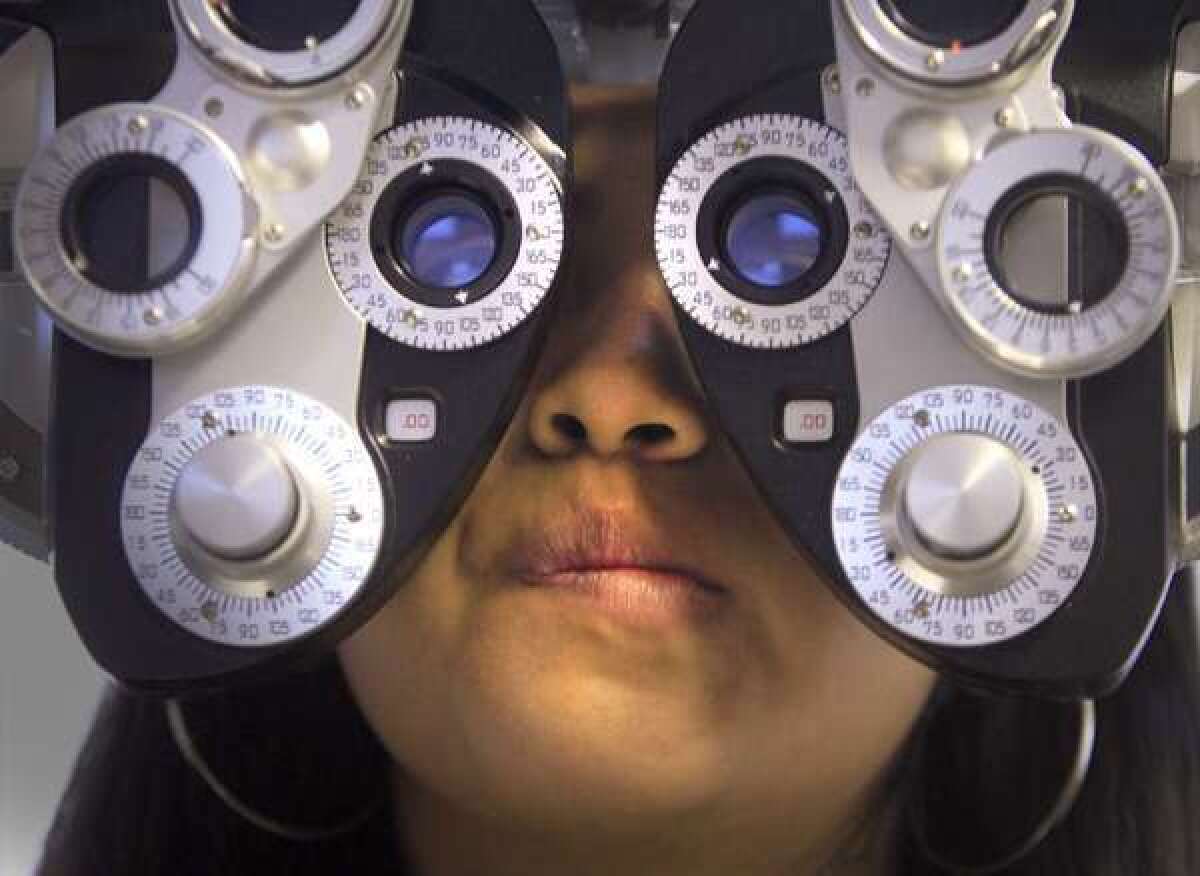Increase in vision problems could be linked to diabetes rise

An increase in vision problems that cannot be corrected with lenses may be related to an uptick in diabetes rates over the same period, researchers said Tuesday.
The team, led by Dr. David S. Friedman of the Johns Hopkins University School of Medicine in Baltimore, gathered survey and physical examination data collected from 9,471 U.S. adults over the age of 20 in 1999 to 2002 and from another set of 10,480 Americans in 2005 to 2008. The researchers calculated that rates of prevalence of “non-refractive visual impairment” increased 21% in the overall study population, from 1.4% in 1999-2002 to 1.7% in 2005-2008. Rates increased 40% among non-Latino whites ages 20 to 39 in the same period.
After analyzing a series of variables, including age, sex, race, schooling, income, obesity, diabetes diagnosis and amount of time since diabetes diagnosis, as well as visual impairment, they found that most of the risk factors for visual impairment had decreased or remained stable between the two time periods. The exception was prevalence of diabetes diagnosed at least 10 years previously, which climbed.
This “is consistent with the hypothesis that increasing prevalence of diabetes among younger U.S. residents, wth subsequent increasing duration of diabetes, may be related to worsening vision,” the authors wrote, in a study published in the Journal of the American Medical Assn.
“Other than diabetes,” they added, “we were unable to identify any other reason for increasing prevalence of non-refractive visual impairment.”
People with diabetes lose vision because of damage to the blood vessels of the retina, the layer of light-sensitive tissue at the back of the eye. People with diabetes are also susceptible to cataracts at a younger age than people with normal glucose levels and are more likely to develop glaucoma.
In an editorial published with the JAMA study, researchers David C. Musch and Dr. Thomas W. Gardner of the University of Michigan in Ann Arbor noted that the data the team examined presented some challenges for interpretation — for instance, subjects were selected anew every couple of years and not followed over time — and suggested that ongoing population-based studies “would yield much more information.”
Still, they wrote, the study “should alert public health planners, who need to prepare for the effects on the health care system” as more Americans suffer diabetes-related vision troubles in coming years.
To keep tabs on vision loss, the National Institutes of Health’s National Eye Institute urges all people with diabetes to get a comprehensive eye exam once a year — even if they don’t suffer from symptoms, which may not occur until later stages of the disease. This information sheet from the National Eye Institute explains more about vision problems and diabetes. For more on diabetes, check out this information page from the U.S. Centers for Disease Control and Prevention.




